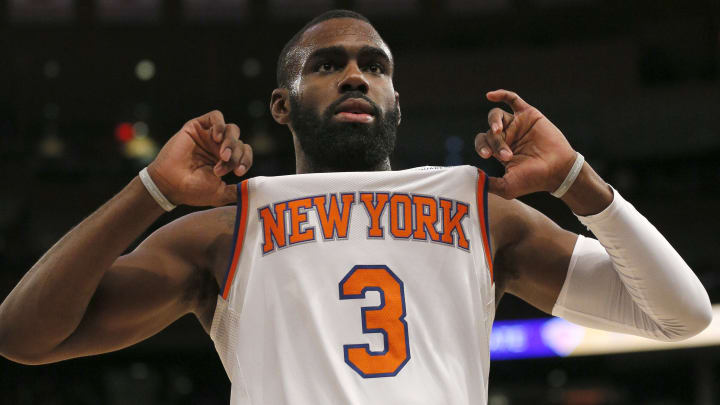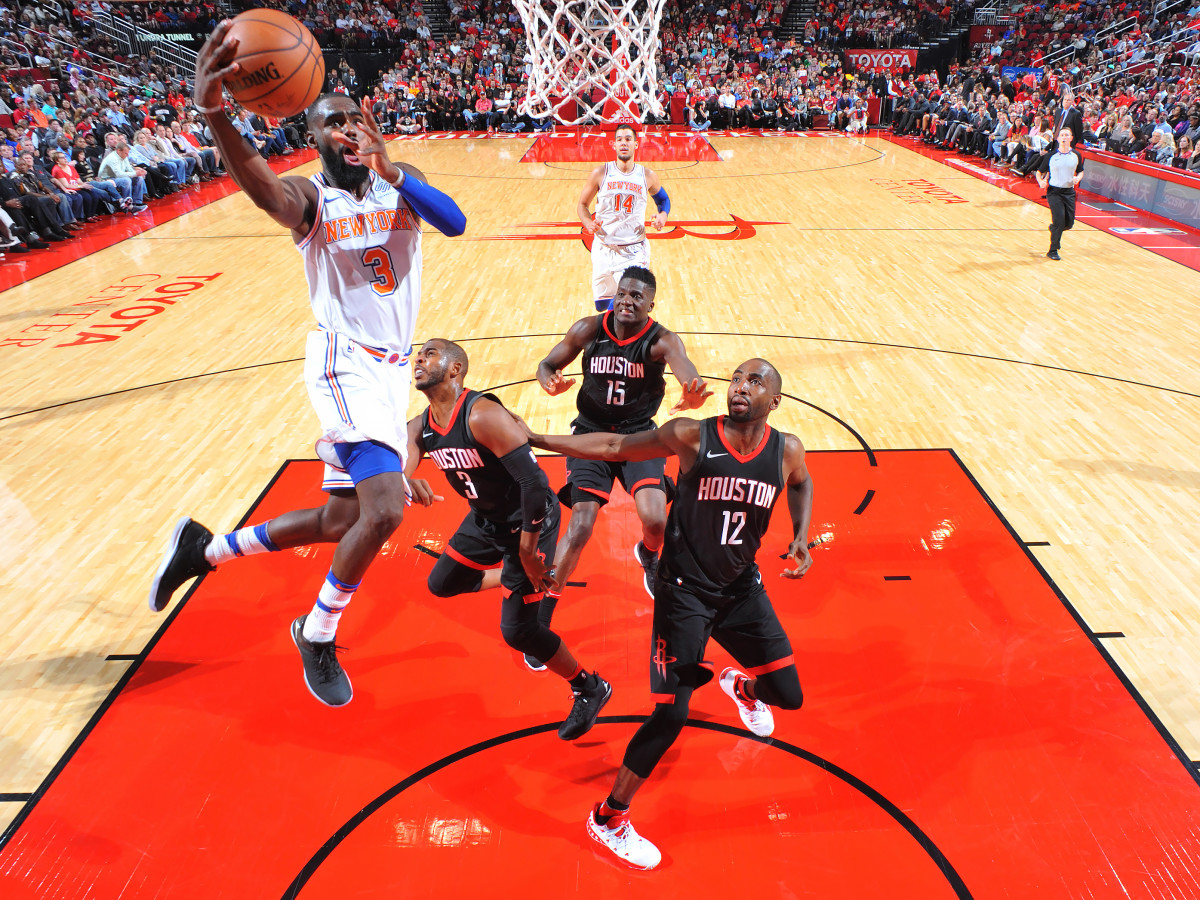Tim Hardaway Jr. Plays His Way Into Optimism

The New York Knicks are, at this moment in time, a winning basketball team. There are many reasons to believe that this is a temporary state, not least of all their three straight losses. A reckoning is coming. Even still, their progress is worth noting. The Knicks are not back, but they're finding their way.
Kristaps Porzingis looks every bit the superstar New York needs him to be. Rookie guard Frank Ntilikina is clearly precocious. And Tim Hardaway Jr. may have pulled off the most impressive feat of all by making the four-year, $71 million contract he signed last summer look like anything other than a complete disaster. It took that kind of offer to pry Hardaway from the Hawks out of restricted free agency, but it was fair to wonder if the Knicks could really afford him. From a literal, logistical perspective, that figure could slot into New York's cap sheet without issue. Yet for a young team with so much reconstruction still needed, the thought of adding more risky salary bloat to a ledger with $55.6 million already allotted to Joakim Noah seemed, at best, needless.
The Best Flashbaq: Shaq on Ewing, Kobe and His MSG Debut 25 Years Later
It still is. But every contract is signed to reflect a range of possibilities, and Hardaway has thus far played his way into optimism. The Knicks didn't pay $71 million for the player Hardaway was last season, or even the player he was during his first stint in New York. His offer was predicated on momentum—that the progress made in his two years in Atlanta was the start of something rather than the culmination.
Hawks head coach Mike Budenholzer had demanded accountability. He traded a first-round pick for Hardaway in 2015 while serving as team president, but didn't even play him until certain bad habits were weeded out. For two months, Hardaway worked and waited. When he finally did join the rotation, Hardaway approached the game differently—as if he were suddenly made aware that he had four teammates with whom he could pass, cut, and screen. The Hawks owe much of their recent success to the way they've polished role players; Paul Millsap, Kyle Korver, and DeMarre Carroll all found themselves in Atlanta. Hardaway did, too, albeit through completely different means.

For Carroll, change came with range. As soon as he started shooting threes at a league-average level, the game—and the rotation—opened up for him. The developmental value for Hardaway was more in habit-forming experience. The only way to play was to play a part. Hardaway's learning curve came from grasping something beyond his individual scoring spurts, which ironically made Hardaway that much more effective at finding his spots.
Last season, Hardaway became a net-positive player for the first time in his career. That trend has continued, meaningfully so considering Hardaway's change in role. It's one thing to post a positive margin as a member of an overperforming bench unit, and quite another to do so as a starter for an under-equipped team. What's most impressive about Hardaway are these triumphs of scale. Strong per-minute scoring marks have stretched to a full night's work, all in a way that's reasonably healthy within a team ecosystem. The Knicks need Hardaway, filling the most substantial role of his career, to shoot. The discipline he honed in Atlanta helps to define when and how, guiding his game to its best effect.
Firing David Fizdale Won't Fix What Ails Grizzlies
New York, in its lack of alternatives, might even ask too much of Hardaway. His shooting percentages have slipped as he's been forced to create more of his own offense than at any point previously. Fundamentally, Hardaway is a shooter. His game can strain when he tries to do too much else, as is evident in pick-and-roll situations. Give Hardaway enough room to step into a pull-up jumper, and all is well. Cover up an option or two and the way he reads the floor becomes a bit lacking. Hardaway is a much more willing passer now than in his first years in the league, though not a much more able one.
There's nothing wrong with Hardaway pushing on the limits of his game now, while the stakes are low. Now is the time to throw those passes, to run more pick-and-roll, and to see what wrinkles might develop in his game. When all is said and done, however, Hardaway might be at his best if he were deployed similarly to Klay Thompson or Brad Beal—freed up with staggered screens and targeted for specific scores:
When Hardaway creates for himself out of the pick-and-roll, he often finds that his defender has recovered before he can fully separate for a shot attempt. There just isn't any burst to his off-the-dribble game. By running off screens, however, Hardaway plays to his strengths; balance and coordination are what make him such a smooth scorer, and both are put to great use by making Hardaway a moving target.
Maximizing that approach would require far more playmaking than New York currently has at its disposal. So in lieu of what he does best, Hardaway does a little of everything. Player development is an endeavor toward complexity, and Hardaway, still just 25, is inching his way there.
He might never be a noticeably more dynamic player than he is now. It seems unlikely, too, that Hardaway would ever become a plus defender. (For all the praise he's getting on that end now, he certainly isn't anywhere close.) Yet progress can be made within those sorts of classifications, and in total those improvements can amount to something consequential. There are other ways to advance than to break through. Hardaway is finding them, and his career in the process.
